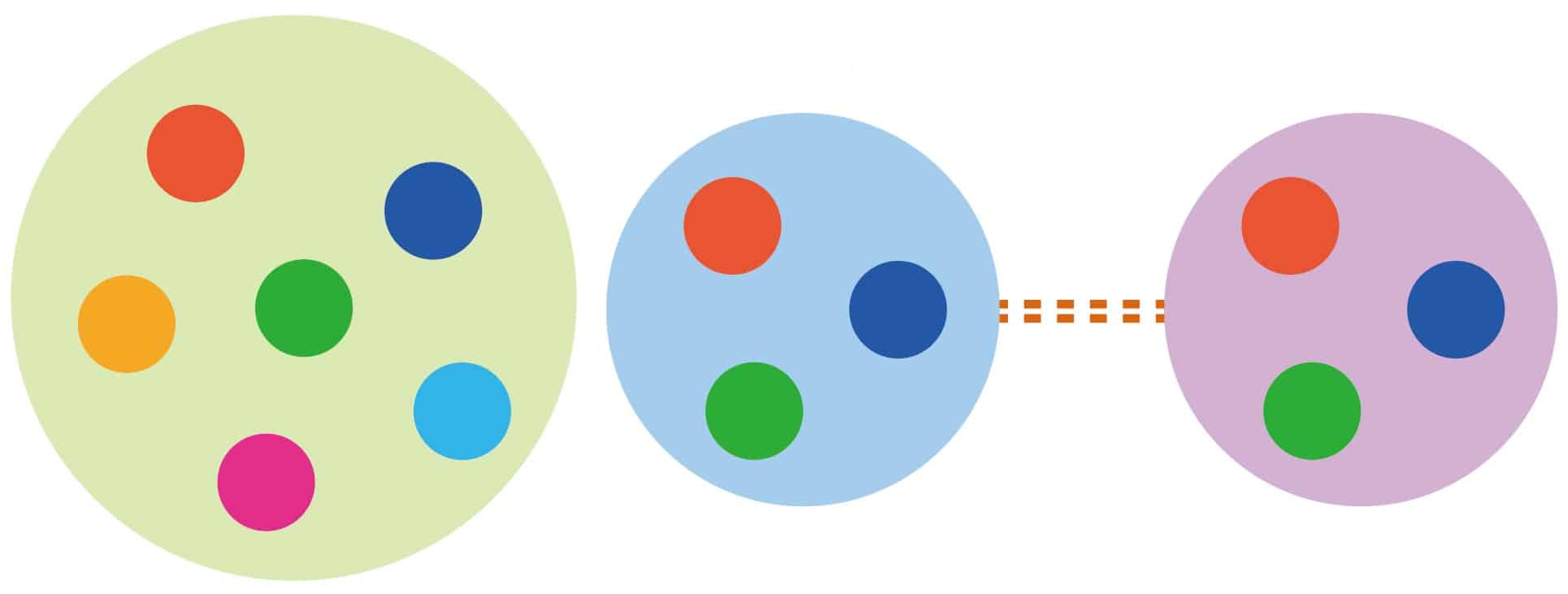
Multiple hexaquarks – strongly interacting hadronic particles comprising six quarks – are likely to exist, according to a new theoretical study by four physicists in China and Germany. The hypothetical particles they considered contained strange (s) and charm (c) quarks. These are both heavy quarks whose presence usually makes hadrons very short-lived and difficult to study experimentally. However, evidence from accelerator experiments has already hinted at the existence of such hexaquarks, leading the team to believe that future experiments at facilities like the Large Hadron Collider (LHC) could validate their predictions.
“Hexaquarks are a type of exotic hadron, distinct from the more familiar baryons (which contain three quarks, like protons and neutrons) and mesons (which contain a quark-antiquark pair),” explains Bo Wang of Hebei University who collaborated on the research. “In general, there are two types of hexaquark states: one where six quarks are confined within a compact hadron, and another that consists of a molecular-like structure formed by two baryons [see figure]. Our [research] focuses on the latter type.”
In molecule-like hexaquarks, the constituent baryons are expected to be not as tightly bound by the strong interaction as the quarks within each baryon. This makes these hexaquarks particularly interesting for studying new aspects of the strong interaction that binds quarks together. This could help physicists better understand quantum chromodynamics – which is the theory that describes the strong interaction and is enormously challenging to implement in calculations.
In their new work, Wang and colleagues employed a combination of techniques used in previous hadron studies, incorporating specific parameters related to the strong interaction that were determined from earlier research on other exotic hadrons, such as tetraquarks (four-quark states) and pentaquarks (five-quark states).
Bag of quarks
“It can be easily inferred within our model that if the molecular tetraquarks and pentaquarks exist, then the molecular hexaquarks must also exist,” said Wang. “Experimental searches for these hexaquark states will help reveal whether nature prefers to construct higher-level structural units, namely hadronic molecular states, or whether it merely favours putting the quarks into a bag, meaning compact multiquark states.”
By applying a range of sophisticated techniques, the scientists were able to calculate the hexaquarks’ masses and lifetimes, which are among the most important parameters of elementary particles and play a primary role in their identification in experiments.
“We have developed a method that combines effective field theory and the quark model to describe the residual strong interactions between quarks,” explained Wang. “The parameters are determined using well-measured states, such as the Pc pentaquarks and the tetraquarks X(3872) and Zc(3900). Finally, the mass spectrum of the molecular-like hexaquark states is determined by solving the Lippmann-Schwinger equation.”
Using this approach, Wang and his colleagues explored various potential hexaquark configurations, all of which included not only the lighter up (u) and down (d) quarks found in protons and neutrons, but also the much heavier s and charm c quarks. Their theoretical models encompassed hexaquarks made from two identical baryons, a baryon paired with its antiparticle, and combinations of two different baryons.
Wealth of testable predictions
While only non-molecular hexaquark candidates have been observed experimentally so far, Wang a colleagues offer a wealth of testable predictions about the subtle properties of strong interactions, making these findings particularly significant.
“Several candidates for molecular-type tetraquarks and pentaquarks have been observed experimentally, notably by collaborations such as the LHCb, BESIII, and Belle, but no candidates for molecular-type hexaquark states containing heavy quarks have yet been found.” said Wang.
The researchers were also able to compare their findings with results from other methods, such as lattice quantum chromodynamics, where space is represented by a finite grid, enabling detailed calculations. In all cases where comparisons were possible, the results were consistent, lending further credibility to the team’s conclusions. However, only experimental evidence can provide definitive proof, and the researchers are optimistic that such confirmation is not far off.
“As future collider experiments are upgraded and established, they will undoubtedly generate a wealth of data for the study of hadronic physics,” concluded Wang. “Research into hadronic molecular states is currently one of the most vibrant areas of inquiry and is expected to remain so for the foreseeable future.”
“Our aspiration is to develop a theoretical framework that comprehensively describes the residual strong interactions, unifying the nuclear forces and interactions between heavy-flavour hadrons under a consistent model and set of parameters. This holds profound significance for our understanding of strong interactions, making the investigation of various properties of hadronic molecular states an excellent entry point for this endeavour.”
The research is described in Physical Review D.
The post Multiple molecular hexaquarks are predicted by theoretical study appeared first on Physics World.

